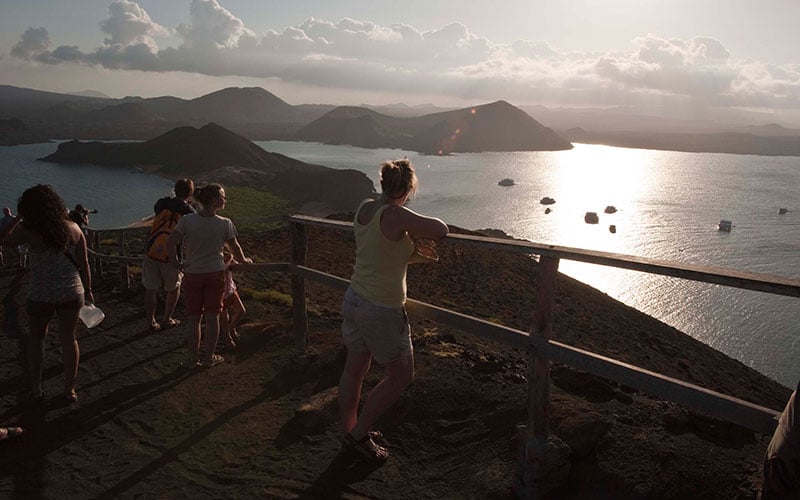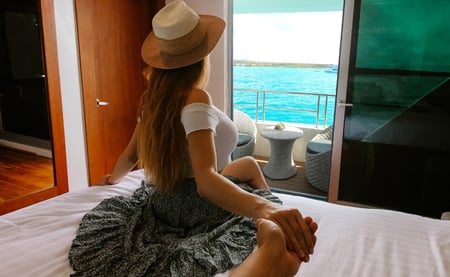The Galapagos Islands is a dream destination. Who hasn’t seen one of the many Galapagos TV specials featuring jolly sea lions, majestic giant tortoises, and beautiful fish and not wanted to come? Since the 1960s visitors have been flocking to the Galapagos. But what is the best way to see the Galapagos Islands? There are three basic options: small ships, large ships and land-based Galapagos tours. Which is best for you?
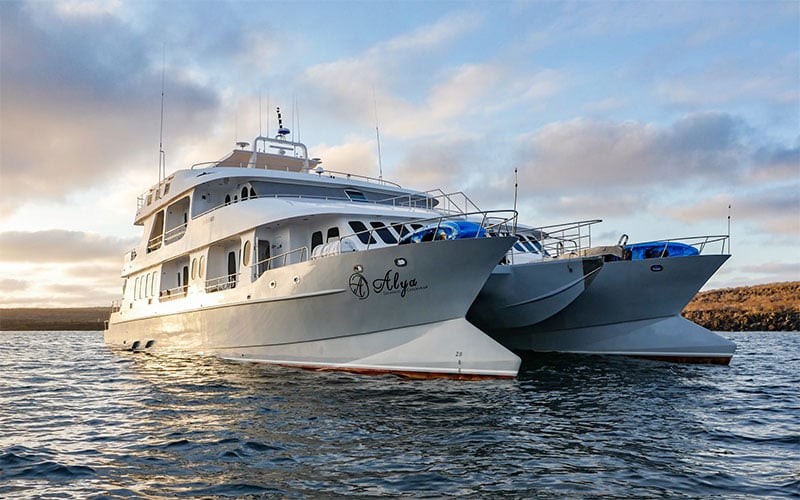
Small Ships
Most of the eighty or so ships currently serving the Galapagos are smaller. That is, they hold up to 16 passengers which is the maximum amount of visitors that one National Park Guide can legally supervise. The small ships are great for making new friends and getting to know the crew and guide.
Large Ships
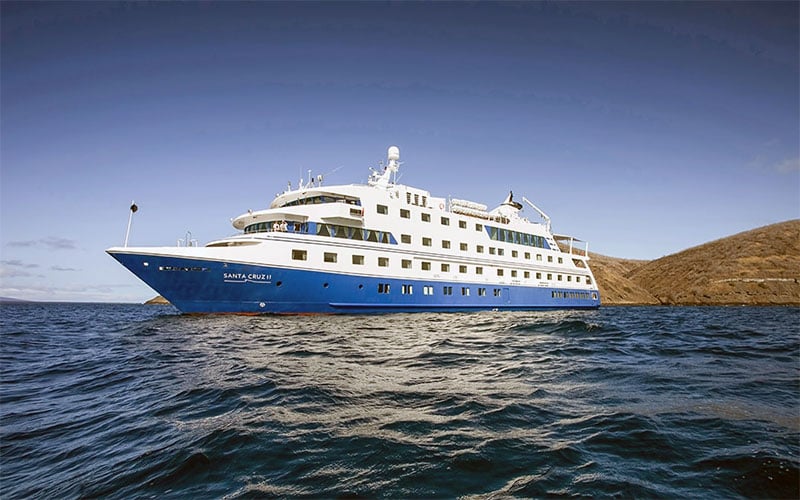
There are several large cruise ships as well. The largest holds 100 passengers. These ships are more stable on the water and have more amenities and activities such as glass bottom boats, spas, pools, or cooking lessons. There are often many languages and cultures onboard which can be fun.
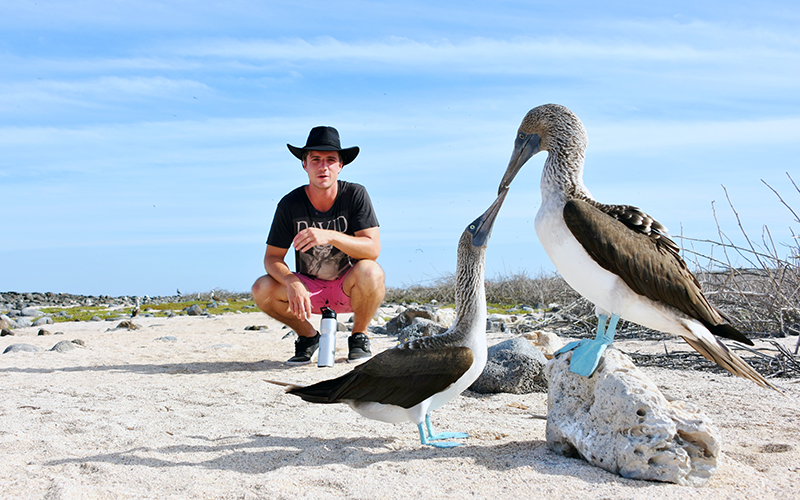
Land-based Tours
Growing in popularity, the land-based tour is just what it sounds like. You sleep in a hotel in Puerto Ayora or Puerto Baquerizo Moreno and take day trips to visit island sites. This option has more flexibility with the itinerary and is good for people not as comfortable living aboard. You can mingle with the locals, go diving in Galapagos, and enjoy restaurants and beaches at your own leisure.

So how do these options stack up?
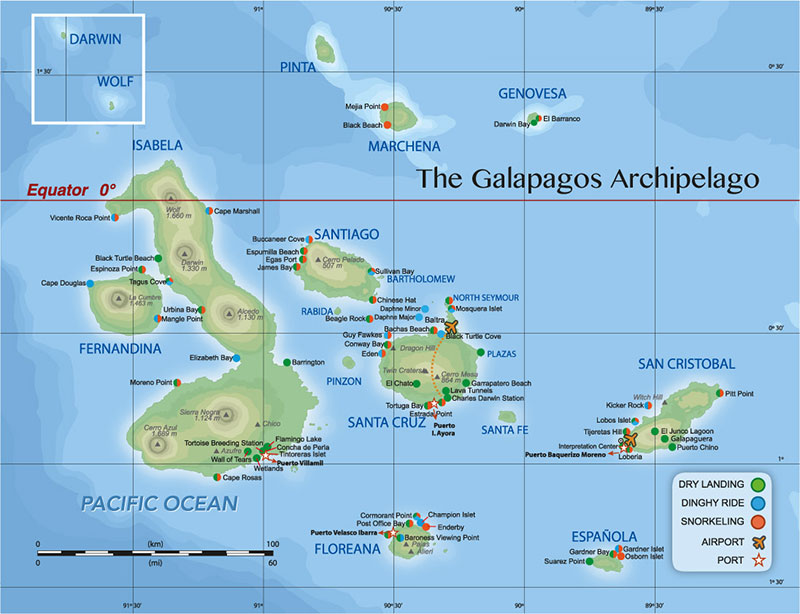
Visitor Sites
The park service vigorously monitors and controls the visitor sites. The fragile ones can only be visited by smaller ships (thus lessening the immediate impact) while some of the more “tourist-proof” sites are allocated to the larger ships. It is not possible to say that the sites themselves are any better or worse, and the park service switches them around often.
Winner: Small ship.
Second place: Large ship.
Loser: Land-based tours.
Why? On a larger ship, visitors have to wait their turn to get on and off, losing valuable hiking and snorkeling time. Land-based tours cannot day-trip to distant visitor sites such as Genovesa and Española which are some of the best in the Galapagos..
Service
Every ship in the Galapagos has highly trained guides, crew, and captain. The Park Service closely monitors all licensing, and they are all certified. On most cruises, you’ll find good food, friendly staff, and dedicated professionals.
Winner: Small ship.
Second Place: Large ship.
Loser: Land-based tour.
Why? Assuming that you’re on one of the reputable small ships like the Grand Majestic, the snug conditions will mean that you personally get to know the crew. On the larger ships, you’ll never even see half the crew. Obviously on a land-based tour, there are fewer crew and staff to interact with and the guide may even change daily.

Seasickness
Seasickness is common on any cruise, especially when the waters are rougher. If you’re prone to it, you may want to take it into consideration.
Winner: Land-based tour.
Second Place: Large ship.
Loser: Small ship.
Why? Of course, the large, stable ships are best. Everyone knows that. Since most of the navigation is done at night, living and sleeping aboard can be difficult for some people no matter the size of the boat. On a hotel-based tour, be cautioned that the 1-2 hours spent arriving to your day-trip destination may rough, but short.
Many of the smaller ships are catamarans with two hulls, such as the Alia, making them more stable than you’d think. A travel agent or tour operator can give you more information about the stability of each boat.

Eco-tourism
These days we all want to make a difference. No one wants to perpetuate environmental damage and we all want to be responsible tourists.
Winner: Land-based tour
Second place: Tie, small and large ships
Why? The land-based tours leave the least impact now that the Galapagos towns are finally recycling. The tiny motorboats do not have the impact of the larger ships and the locals get to make a better profit. The large ships are subject to very strict anti-pollution laws, so the worst offenders are the low-end small ships that carelessly pollute.
If you want to be ecologically sensitive, your best bet is to look into the company that owns the ship: many of them actively support the environment and local environmental programs.
Overall
Winner: Small ship
Second Place: Large ship
Loser: Land-based tour
The very best and the very worst ships that Galapagos has to offer are small; the large ones are in the middle. What the smaller ships give up in stability they make up for in personalized service, flexibility and intimacy. As for land-based tours, they’re best for those who want to do a lot of scuba diving or who can’t afford a cruise.
What’s the Difference Between
Budget & First Class?
Ask any Galapagos guide, and they’ll tell you the best way to see the islands is to spend several days on board one of the live-aboard cruises. These cruises go to far-flung islands like Española and Genovesa, which are not accessible from the main towns.
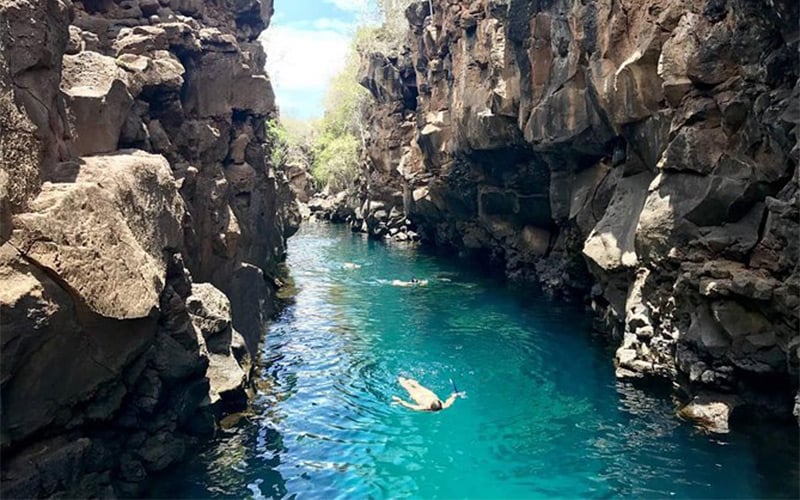
But once you start looking for a Galápagos cruise, you’ll find a dizzying array of options in different categories and price ranges. Obviously, most travelers want to save money where they can.
which brings us to the big question: is it worth it to pay more for an upgrade from a budget-class Galápagos ship to one in a higher category ?
What’s the Difference Between Budget & First Class?
Costs
Needless to say, this is a big question for most travelers. The price tag is usually the most important factor of all! A typical first-class cruise costs about $3,200/person for an 8 day/7 night trip. A budget Galápagos cruiser is considerably cheaper, averaging around $1,900/person for the same length trip. To do some quick math, a couple would save a total of $2,600 or so on their trip by going with the cheaper ship. Other expenses, such as airfare, tips and souvenirs would be about the same on either ship. Some first class and luxury class vessel packages, however, include free flights to the Galapagos. Edge: Budget Ship
Itinerary
The itinerary of the ship is one very important factor that many visitors fail to consider. Do you want to see a Waved Albatross? Then pick a ship that goes to Española Island. Do you want to see Penguins? Pick a ship headed to western Galápagos. That being said, there isn’t really much difference between itineraries of all the ships: schedules are partly set by the park service and most of the ships visit the same sites, so the question of first-class vs. budget ship is largely moot.

Facilities
This is where the first-class ships really shine. The differences in facilities and accommodations on a budget and a first-class ship are enormous. Budget ship staterooms are generally below the deck, on or under the waterline. They are cramped, poorly-designed and uncomfortable. They are often close to the engine room, which means that they are noisy and often smell badly of diesel. Most budget ships have bunk beds in the cabin which can be a challenge for many passengers. Many of the older ships are poorly laid-out, which means narrow or awkward social areas like bars and restaurants. Air conditioning regularly does not work or is noisy, if they have it at all. Snorkeling gear may be worn out.
The first-class ships are another story entirely. Staterooms are generally located on or above the main deck, airy and comfortable. Many have small balconies or at least large windows for scenic views. They still can be small, as there is limited space on a ship, but the design and layout are vastly superior. The whole ship is air conditioned with new machines that make very little noise. Social areas are classy and comfortable. Snorkeling gear is new and well-maintained.

Service
On the first-class ships, service is a priority. First-class ships hire the best captains, crew and guides and ask their guests to fill out comment cards at the end of their cruises in order to improve their service. The ship is kept neat and in perfect working order. Representatives are usually with the guests from beginning to end: an airport pick-up in Quito to drop-off and check-in for the Galápagos flight, and assistance upon returning to the mainland of Ecuador after the tour. Guides are first-rate, with good language skills and lots of experience. Food is outstanding and memorable, with options for vegetarians and other special-needs diners.
Overall Recommendation:
No one can argue that saving money is important, especially when first-class ships cost significantly more than budget vessels. When service, facilities and reliability are factored in, however, it probably makes more sense to upgrade if you can. After all, what’s the point of an expensive visit to the Galápagos if you’re uncomfortable and miserable the whole time you’re on board the ship? The extra money pays for itself in little things like a good night’s sleep, a snorkeling mask that doesn’t leak and a guide who actually speaks your language and can answer all of your questions correctly …with a smile!
Cruises vs. Hotel-Based Tours
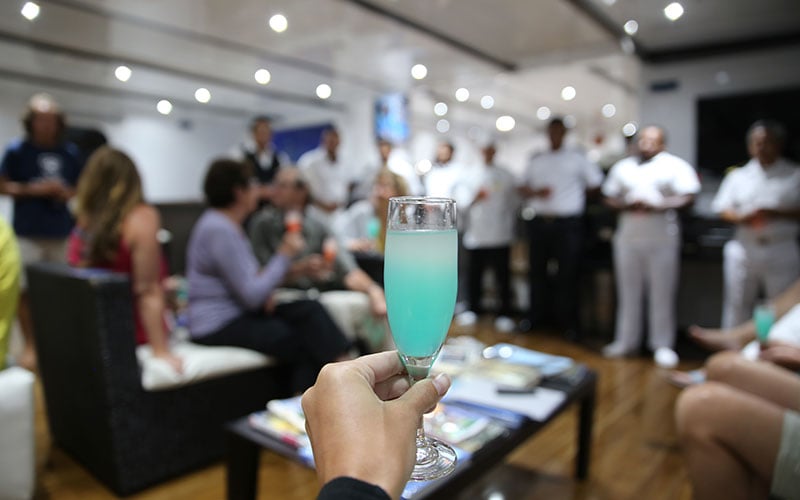
Most cruises offer very impressive itineraries, visiting not only major sites but also remote islets in the archipelago. Because most of the navigation takes place at night, you are able to spend more time visiting the islands and doing activities during the day.
On a cruise, a naturalist guide leads all of your tours and an experienced crew attends to your needs onboard including the provision of great international cuisine for breakfast, lunch, and dinner.
As well as providing a place to relax on deck and enjoy the sunset with a cocktail, most cruises also offer evening presentations about conservation, cultural history, or important Galapagos information.
If you are prone to seasickness, larger cruises tend to be the most stable, followed by catamarans, and finally other vessels. Most cruises can accommodate for some minor physical disabilities. The largest cruise ships in the Galapagos offer programs that may appeal to certain travelers: “formal” evenings, on-board spas, glass bottom boats and karaoke for example.
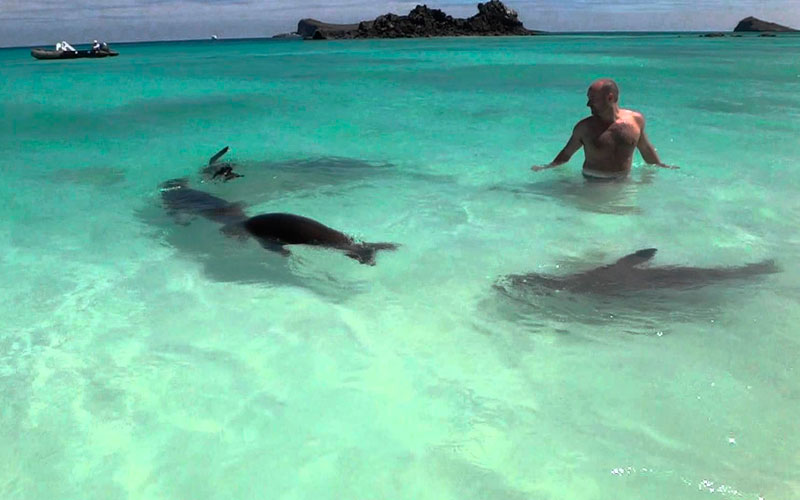
Hotel-based tours offer a choice of four options: land-based, diving, multisport and island hopping. All of these give visitors the opportunity to choose their accommodation from a range of budget, midrange, first class and luxury hotels located on the Islands of Floreana, Isabela, San Cristobal and Santa Cruz.
Staying on one of the Islands provides the opportunity to spend time in the ports, browse the shops and eat out at one of the many restaurants as well as get to know the local communities.
The hotel-based options also offer a wide range of activities to suit all interests, thus allowing visitors the flexibility to build their own schedule. However, as only four of the major islands have hotels, programs and visiting options may be limited, as day visits to some islands may be impractical due to navigation time to and from the nearest hosting island.
In summary, both cruises and hotel-based tours have their pros and cons, so take the cruise option if you:
- Enjoy travelling by boat
- Want to visit more than just the sites on the main islands
- Prefer following a pre-determined itinerary with a guide
And opt for a hotel-based tour if you:- Want to spend more time on the main Islands
- Don’t want to be limited to onboard facilities and services
- Would prefer the flexibility of planning your own schedule
Either way, a cruise or hotel based experience in the Galapagos Islands will be memorable!
Explore the Galapagos Islands and enjoy the best visitor sites, unique wildlife and breathtaking views.
